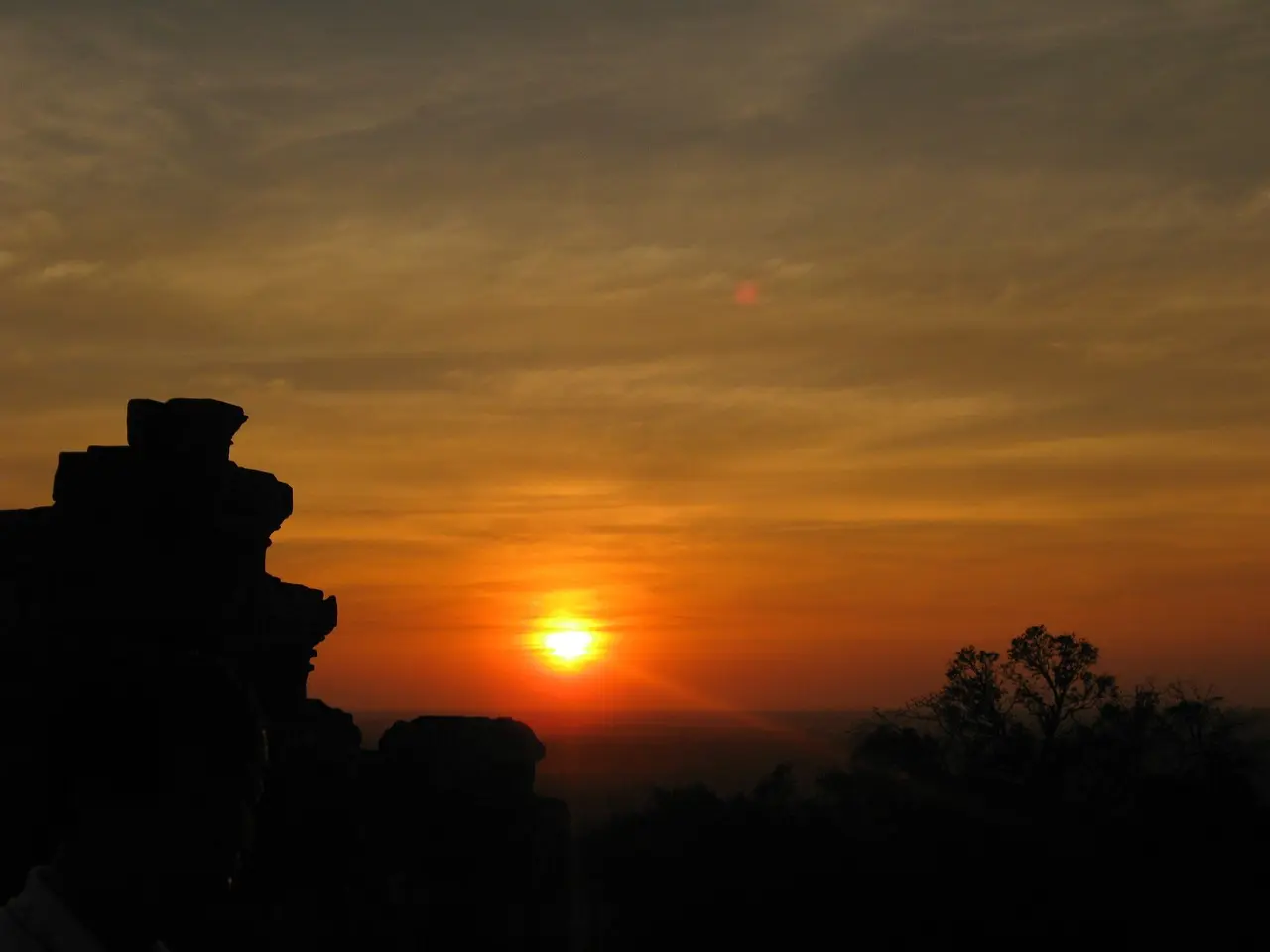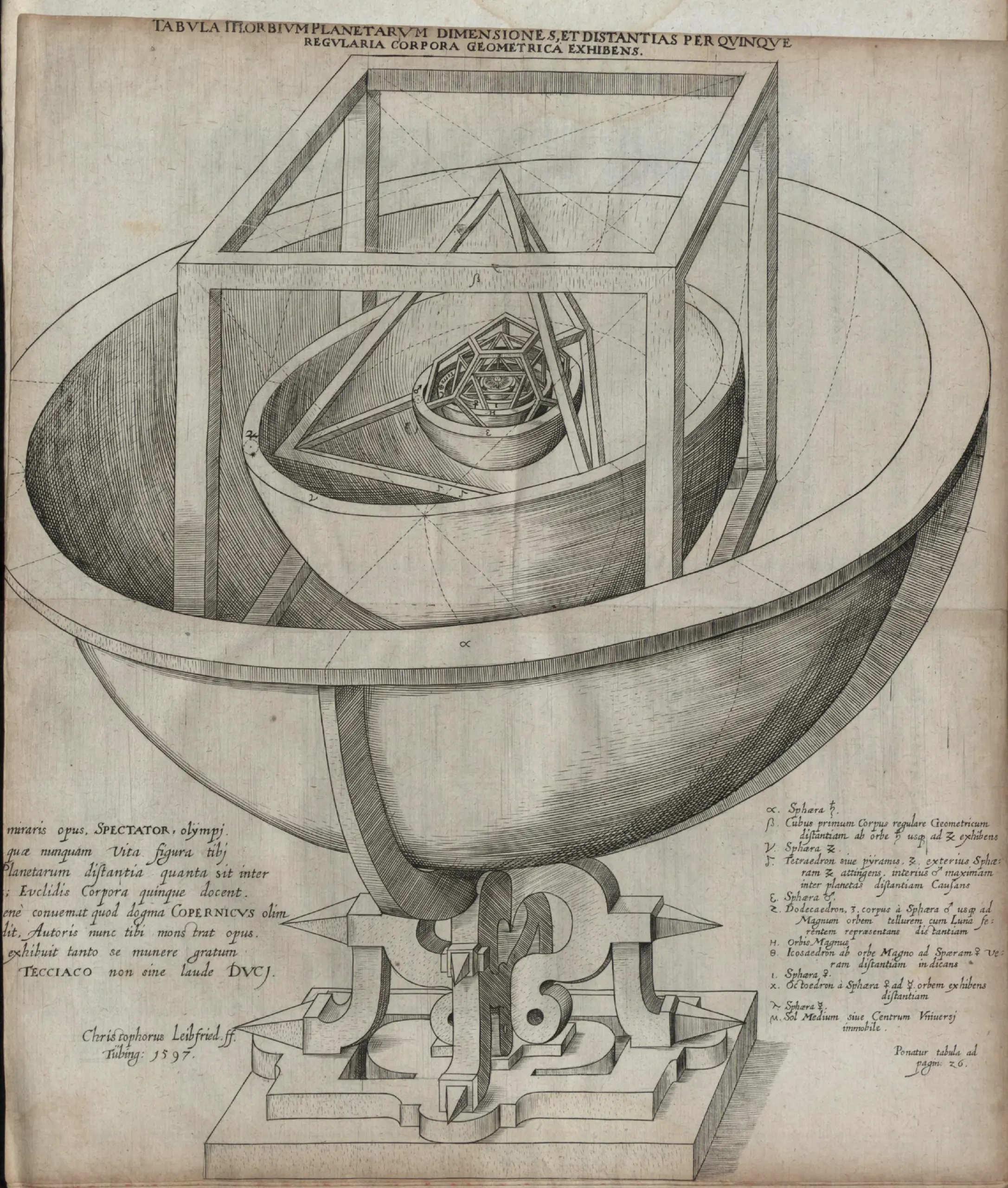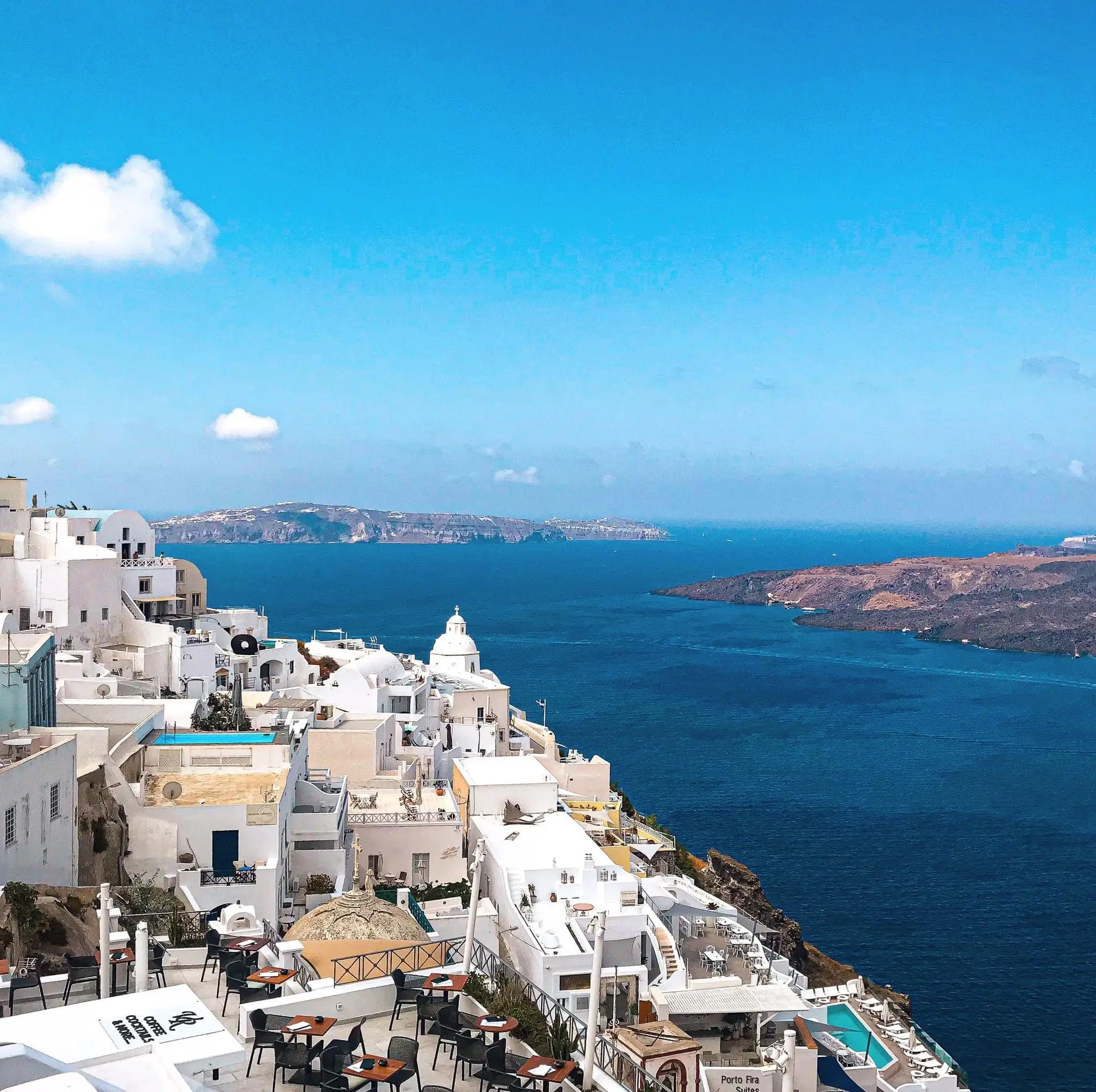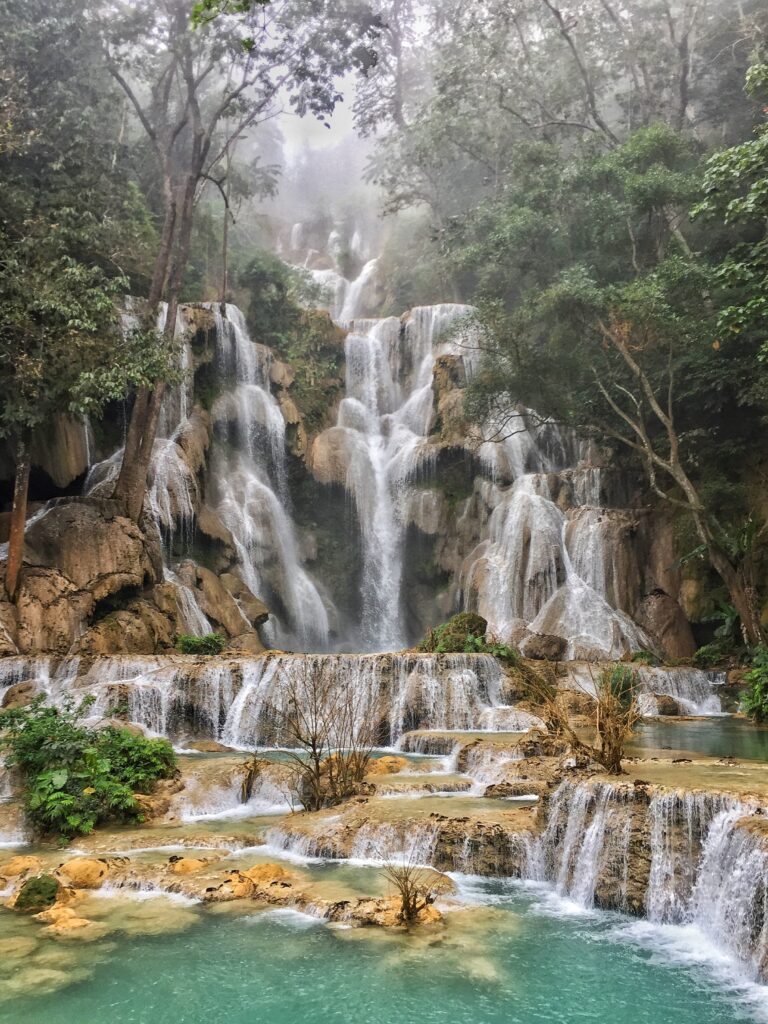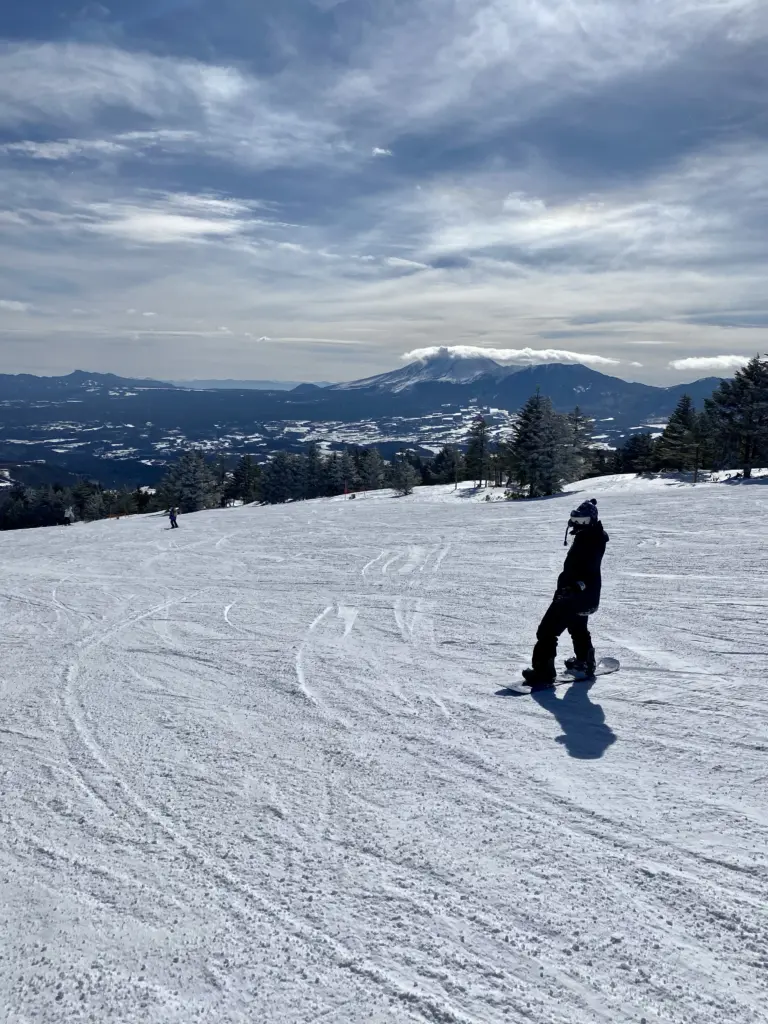Exploring Angkor Archaeological Park via e-bike is one of the best ways to immerse yourself in the ancient temples and jungles of Siem Reap!
You’re in for quite a treat in this article as we go through the essential information on e-bikes in Siem Reap as well as a tried and tested 3-day cycling itinerary that will cover the must-see temples (and more!) of Angkor Archaeological Park.
Table of Contents
Toggle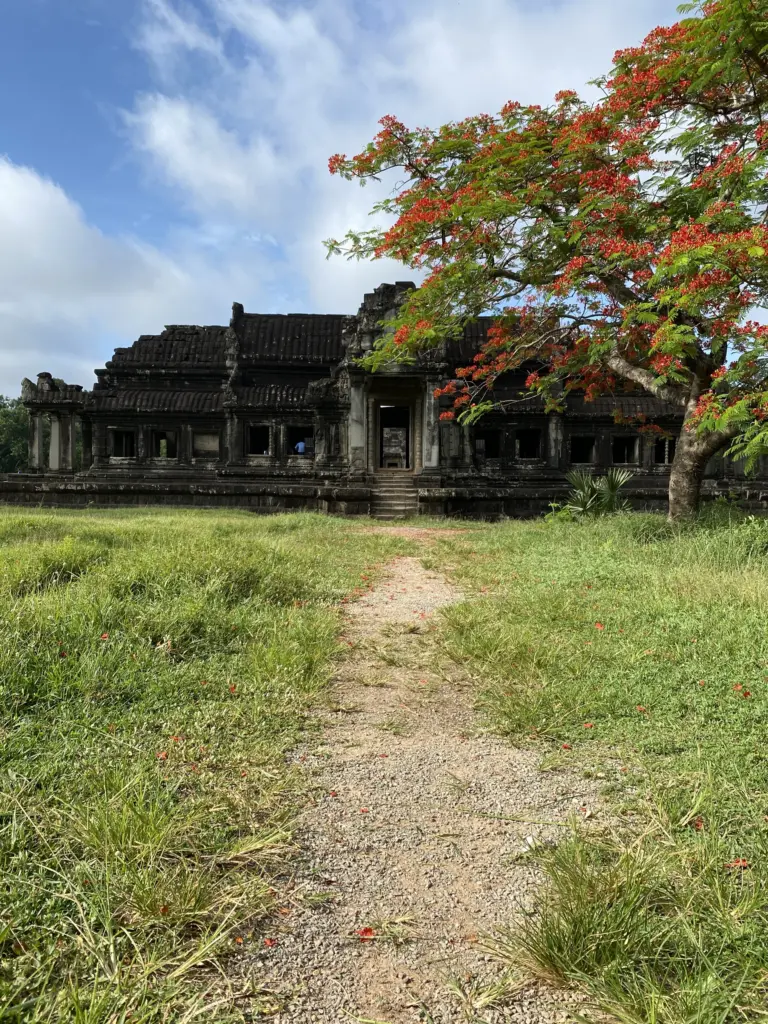
How to Get Around Angkor Archaeological Park
Angkor Archaeological Park is a really large area with numerous temples to explore. Here are some ways to get around the park:
- Tuk-tuk: Tuk-tuks are a popular mode of transportation in Siem Reap and can be hired to take you around the park.
- Bicycle: Renting a bicycle is for me, the best way to explore the park. The bike or e-bike allows you to take things at your own pace and stop whenever you want. You have total freedom to truly explore the Angkor Temples!
- Motorbike: If you are comfortable riding a motorbike, this can be another quick and efficient way to get around the park.
- Car: If you prefer more comfort and convenience, you can hire a car to take you around the park.
- Walking: If you have plenty of time and want to explore the park at a leisurely pace, walking is an option. Though the amount of places you will see is definitely limited and it will be quite tiring as the days go on.
- Tours: You can also join guided tours for a hassle-free and learning experience such as this one.

How Many Days Do You Need to Explore Angkor Archaeological Park?
3 to 4 days is an optimal amount of time to explore Angkor Park and see the most important sites with plenty of off-the-beaten-path temples in between. With 3 days, we already had an amazing time and were able to visit pretty much all the must-see temples and still have enough time to do other things in Siem Reap such as watching the Phare Circus or cooling off at our pool.
With 4 days, you can take things even more leisurely and even visit the Roluos Group temples. We were too ambitious and tried to visit both the Roluos Group and Angkor Archaeological Park on the 2nd day. We found out the hard way that there wasn’t enough battery charge on our e-bikes and ended up getting stuck on the road! Good times!
Can You Ride a Bike around Angkor Wat?
Yes, you can ride a bicycle around Angkor Wat and the other temples in Angkor Archaeological Park. In fact, renting a bicycle is one of the best ways to explore the park and offers a more intimate and environmentally-friendly experience compared to other modes of transportation.
Why the E-Bike is the Best Way to Get Around Angkor Archaeological Park
Choosing to explore Angkor Archaeological Park using the E-bikes was the best decision we had ever made. Let me convince you:
- E-bikes are very easy to ride! Even if you’re not comfortable on a bicycle, the e-bikes in Siem Reap don’t even require you to pedal, it’s actually more like a scooter and you just have to twist the throttle and off you go!
- E-bikes are much more environmentally-friendly than cars or tuk-tuks, as they produce no emissions and require no fuel.
- You’re more immersed on the e-bike. Without the sound of roaring engines of a tuktuk or being in the confines of a car, on an e-bike you feel the wind, see the sights, feel the road, you’re one with Angkor!
- Renting an e-bike is cheap, ours was around 10 USD per day. Though a bicycle would be the cheapest going around 3 USD per day, you’ll get tired as the days go on unless it’s really what you want to do. Tuktuks go for 15 USD – 20 USD per day.
- The flexibility and freedom you get with the e-bike is second to none. You can get from place to place quickly, park it anywhere and spend as much time as you want per location. Tuktuks have a set time and route, and tours are even much more rigid. It’s super easy to catch the sunrise at Angkor Wat with an e-bike too as you’re not dependent on anything else.
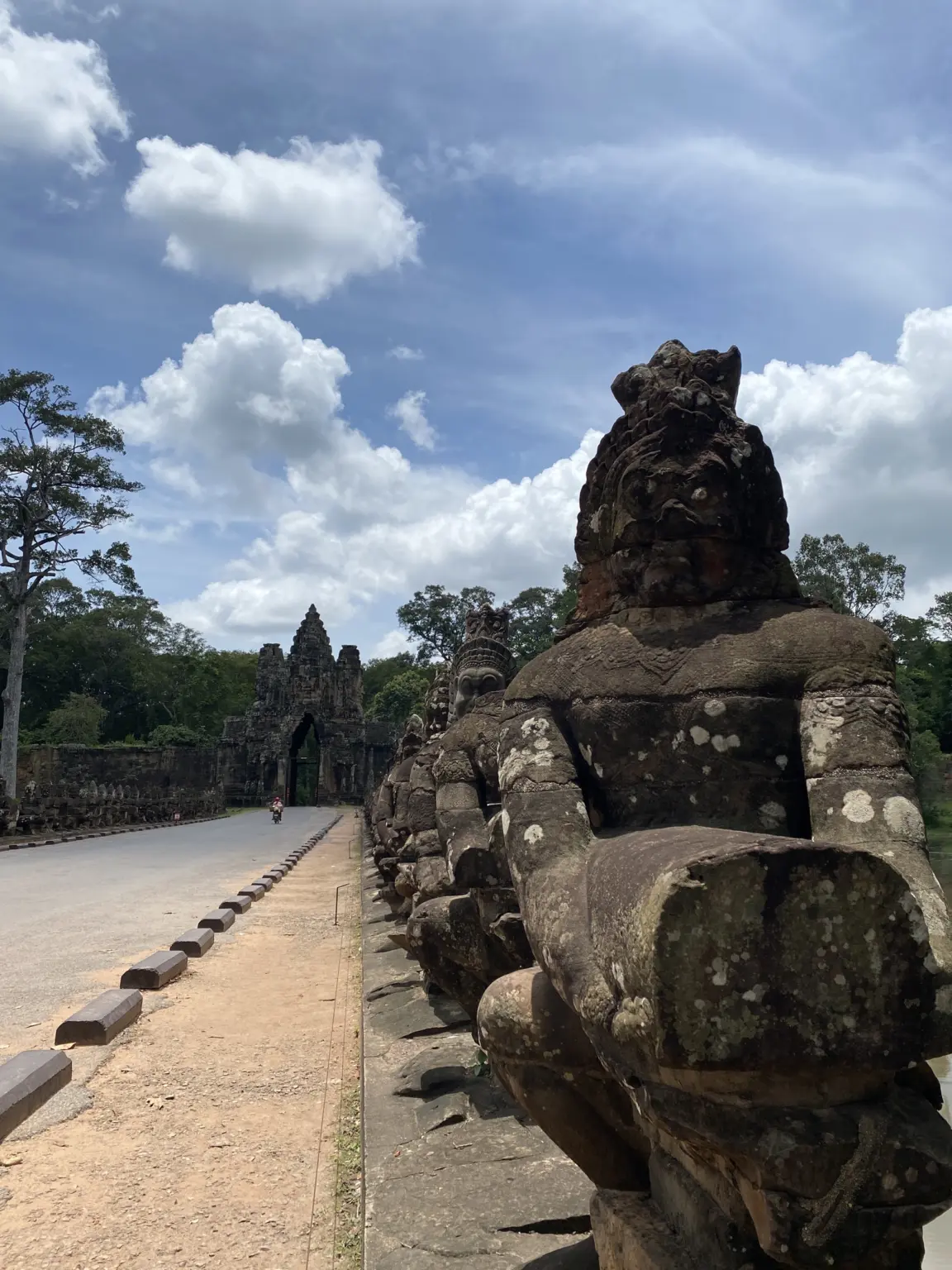
Siem Reap Road Conditions for Cycling
Siem Reap is a popular tourist destination so we found that the roads were quite paved and easily maneuverable even with the traffic. The roads are wide and you’ll usually only be taking the main road going to Angkor Archaeological Park.
Moreover, the roads are mostly flat, we were able to get to Angkor Wat safely in pure darkness to catch the sunrise, all in all Siem Reap is a very safe place for cycling!
Where to Rent an E-Bike in Siem Reap?
While most hostels or hotels would have e-bike rentals available. We rented our e-bikes with Bayon Electric Bike for 10 USD per day. One of the best reasons to go with them is because they also have an outpost in Srah Srang, which is located within Angkor Archaeological Park. Meaning, you can simply exchange batteries for your e-bike as you go around exploring without the hassle of ever worrying about re-charging.
On the way back to our hotel, we would simply stop by the bike shop in Siem Reap to get a new battery cells. We never actually had to charge our batteries at our hotel. It was so convenient and seamless!
Where to Stay in Siem Reap
Siem Reap is a very small town and you can find most places close to each other and all within 15 – 30 minutes from Angkor Archaelogical Park. Here are some of my recommendations:
Best Hotels in Siem Reap
- Han & Daniel Villa Boutique – this is where we personally stayed and what can I say except that it was a blast! The location is conveniently located near most of the sites that we went to around town such as the Phare Circus and the e-bike rental shop. The rooms were spacious and a good bathroom. The beds were great too. They had parking spaces for our bikes with an in-house restaurant for whenever we were lazy to get food outside. Daniel kindly helped us with a lot of stuff too such as an airport pick-up, airport drop-off, and helping us get tickets to Angkor Archaeological Park. The best part was the pool which we were taking a dip in every day!
- Two Seasons Siem Reap Hotel – offers an outdoor pool, free private parking, and a range of services including room service, a 24-hour front desk, and free WiFi. The rooms are air-conditioned, with a desk, flat-screen TV, and private bathroom.
- Damrei Residence & Spa – offer a flat-screen TV, and a seating area. You can enjoy the garden or city views while relaxing with a cup of tea. All rooms have a private bathroom with bathrobes, slippers, and complimentary toiletries.
- Onederz Hostel Siem Reap – a clean, comfortable, and friendly place to stay. With its well-designed layout and premium amenities, including three swimming pools, this hostel offers a high-quality experience.
- Mad Monkey Siem Reap – offers a range of room options, a fantastic pool, and an incredible bar and restaurant serving both local and Western cuisine. At Mad Monkey, you’ll have the opportunity to connect with fellow fun-loving travelers from all around the globe.
- Lub d Cambodia Siem Reap – featuring a Khmer-chic inspired design, Lub d Siem Reap boasts a swimming pool with a swim-up pool bar, inviting lounging areas, and a games area with a pool table and Pacman arcade game. You can indulge in all-day breakfast, expertly brewed coffee at The PumpHouse, and quick snacks from the Grab & Go counter.
The 3 Day Angkor Cycling Tour Itinerary
This specially crafted cycling itinerary is meant to be flexible, so you’re free to skip or check out any other nearby sites but do note that the routes are already optimized to make sure that you not only see as much as you can in a day but also that you’re able to visit all the must-see temples around Angkor Archaeological Park within 3 days which I found is ample time.
Also note that the Google Map routes are on “walking” as default so by e-bike, the travel time will be much less!
I’ve also saved the best for last, seeing Angkor Wat straight away might make the other temples underwhelming I feel like, though that’s not to say they can’t hold a candle to it. You’ll be visiting amazing sites almost every day!
Day 1: The Little Circuit
The Little Circuit takes you to the following places, the ones in bold are the highlights:
1. Khmoch Gate (Gate of the Dead)
Khmoch Gate, also known as the “Gate of the Dead,” is a small gate located on the eastern side of Angkor Thom, which was the ancient capital city of the Khmer Empire. The gate is believed to have been used for transporting dead bodies out of the city. The east was usually associated with death and funeral rites in Khmer culture.
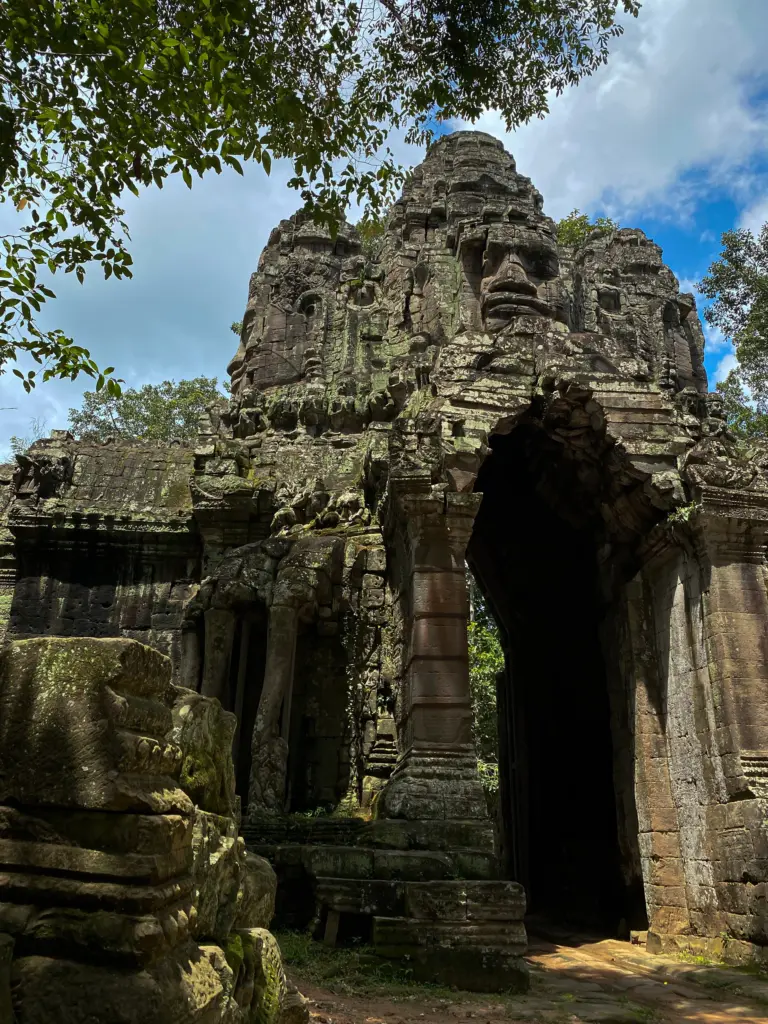
2. Victory Gate
I also recommend checking out Victory Gate as this one was the first time we encountered the famous faces built on structures. It was quite imposing and it made us realize we were really within the remnants of an ancient empire.
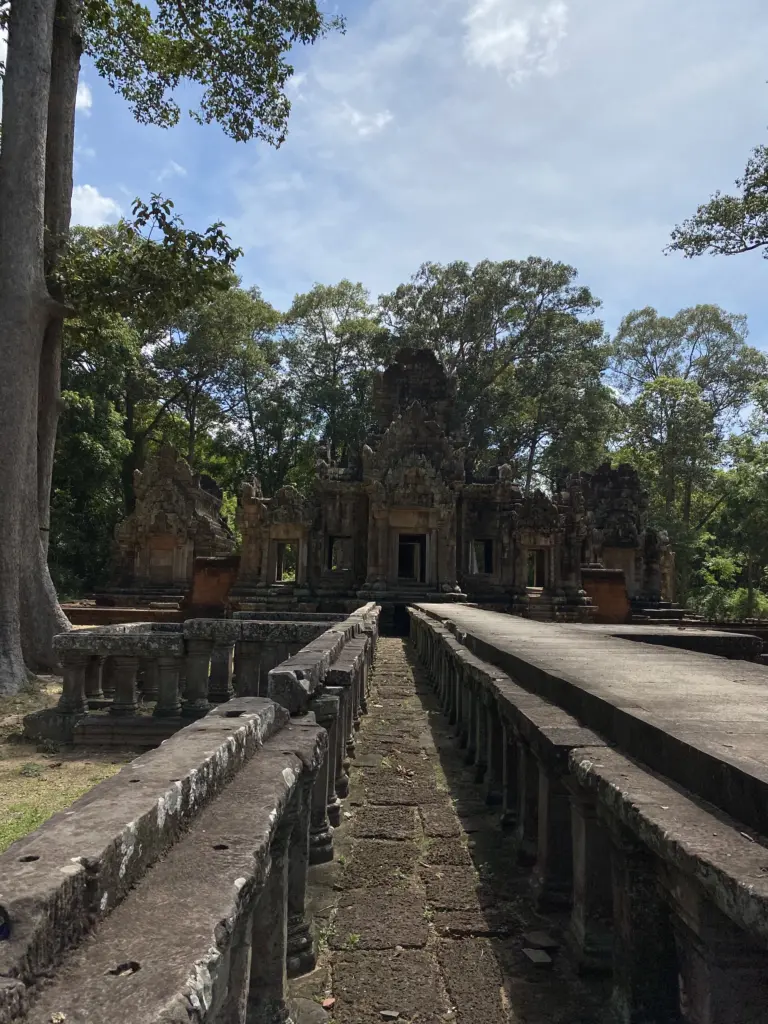
3. Chao Say Tevoda
Chao Say Tevoda was built during the reign of King Suryavarman II in the late 12th century and is similar in style to the nearby Thommanon temple. Chao Say Tevoda features a mix of Hindu and Buddhist architectural styles, with intricate carvings and bas-reliefs depicting scenes from Hindu mythology.
This will be your first encounter with a temple and it was already very impressive for us. It’s not that popular so chances are you’ll have it to yourself. We were climbing around and exploring every room like little kids!
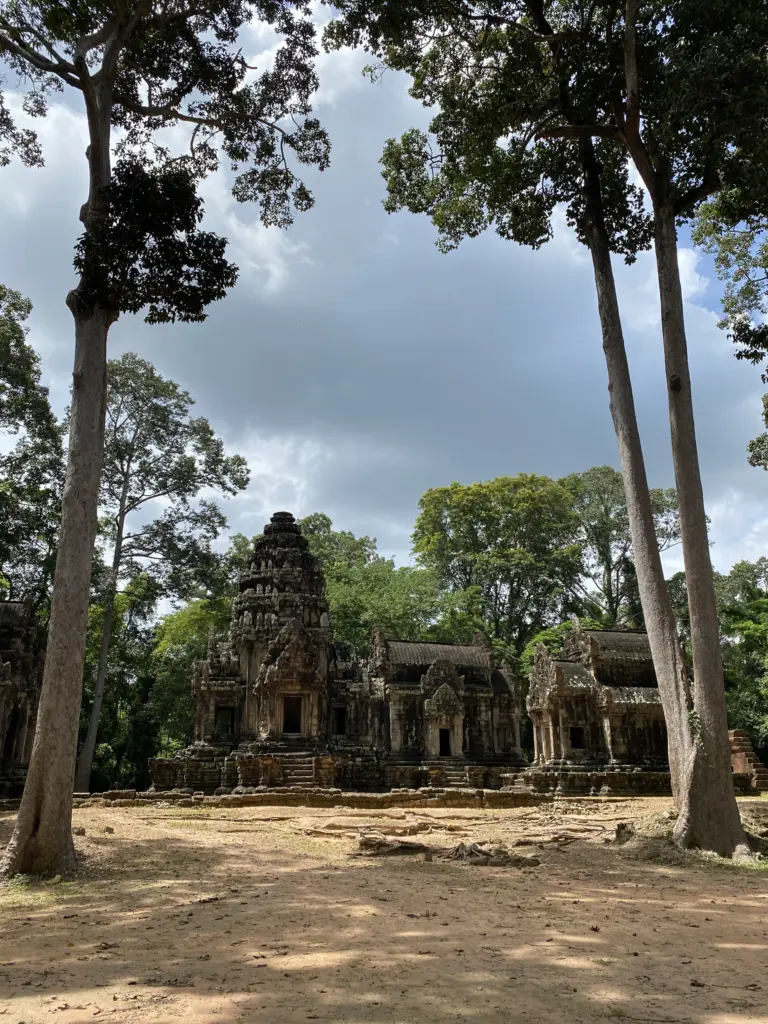
4. Thommanon
Thommanon and Chao Say Tevoda are often referred to as “sister temples” due to their similar size, layout, and architectural style. Thomannon is just right across Chao Say Tevoda it was also built during the reign of King Suryavarman II in the late 12th century. Both temples were originally dedicated to the Hindu gods Shiva and Vishnu.
5. Spean Thma
The name “Spean Thma” means “stone bridge” in Khmer, and the bridge is known for the unique outgrowth of trees sprouting on it.
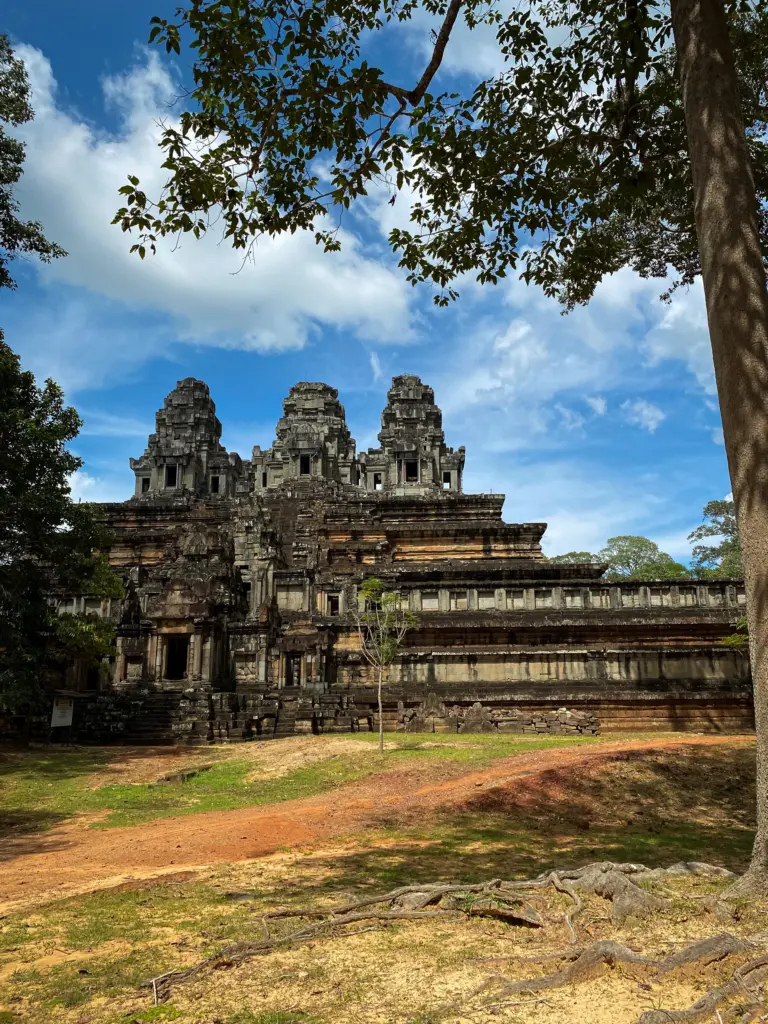
6. Ta Keo
Ta Keo will be one of your first wow-temples. Ta Keo is humongous and its made up of several terraces. It has five sanctuary towers arranged in a quincunx (think of the 5 dots on a die), built on the uppermost level of a five-tier pyramid consisting of overlapping terraces, surrounded by moats. The temple’s design is meant to symbolize Mount Meru, a sacred mountain in Hinduism.
7. Ta Nei
Ta Nei is a relatively simple temple, consisting of a single sanctuary surrounded by a laterite wall. The temple is peaceful and in a secluded location in the forest. It’s dedicated to the Buddha.
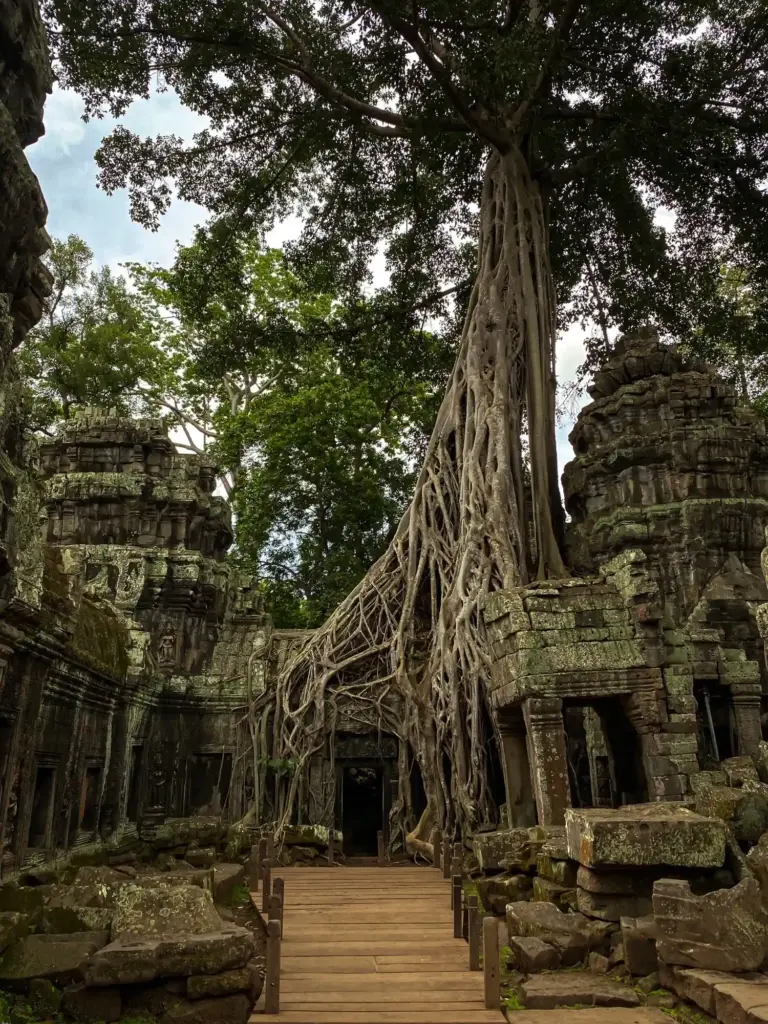
8. Ta Prohm
Ta Prohm is the highlight of the day! This temple blew our minds and left our mouths gaping the whole time. Famously known as the “Tomb Raider” Temple as it was featured in one of the films.
The temple was originally dedicated to the Buddhist deity Prajnaparamita, but later became a Mahayana Buddhist monastery and university.
Ta Prohm is the epitome of what an ancient jungle temple would look like. With large trees and roots growing through and around the temple. The temple complex has been left largely in its natural state, with minimal restoration work done after the temple’s abandonment over the centuries to preserve its original appearance.

9. Banteay Kdei
Banteay Kdei is known for its impressive architecture, with large galleries, courtyards, and towers connected by long corridors and narrow passageways. It’s very fun to get lost here and the endless halls and doors make for excellent framing for photography composition!
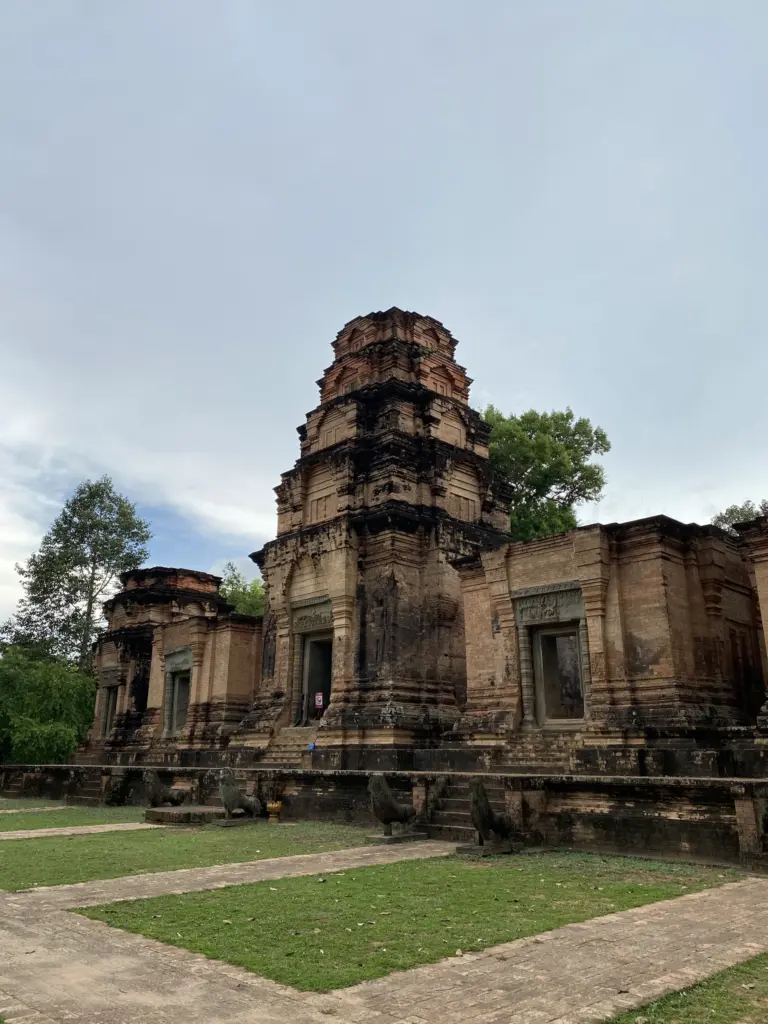
10. Prasat Kravan
Prasat Kravan is a small temple built during the reign of King Harshavarman I in the early 10th century.
Prasat Kravan is a relatively simple temple, consisting of five small brick towers arranged horizontally and it’s the last stop of the day. You can visit this temple on the way back to Siem Reap or you can go back to Srah Srang to get new batteries and catch the sunset!
Day 2: The Grand Circuit
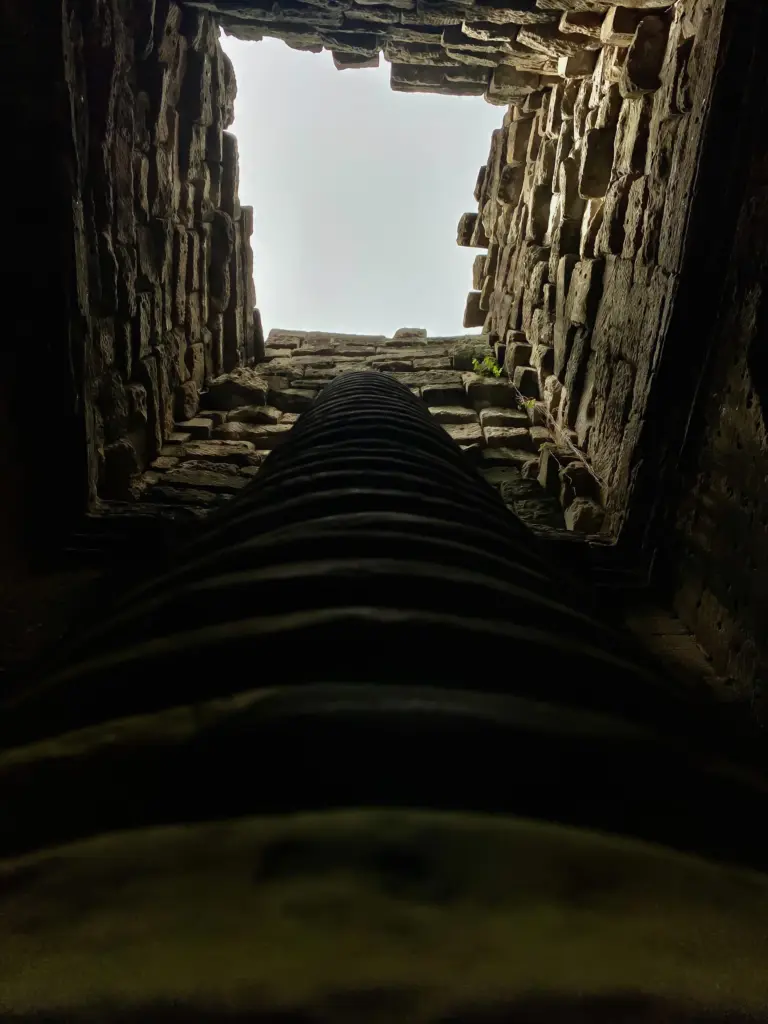
1. Preah Khan
The Preah Khan temple complex, commissioned by King Jayavarman VII in 1191 as a dedication to his father, Preah Khan is a remarkable example of a large linear temple complex set in a dense jungle environment. The temple complex is rectangular and covers an area of 138 acres, enclosed by a moat and walls decorated with monumental carved stone garudas, which are eagle-like divine creatures.
The temple complex consists of various elements such as entryways, towers, ceremonial spaces, courtyards, shrines, and corridors. Notable features of Preah Khan include a two-story pavilion, the sanctum sanctorum which was once plated in bronze, and the Hall of Dancers.

2. Banteay Prei
Banteay Prei, or the “Citadel of the Jungle,” is often overlooked by tour operators due to its location and proximity to other more popular sites, but is a noteworthy insider tip if you’re looking to explore Khmer temples in an idyllic setting.
3. Krol Ko
Krol Ko was built by King Jayavarman VII around the 12th century. It’s a very small temple but it’s on the way towards Neak Peak so why not!

4. Neak Pean
Neak Pean is a small temple located located on an artificial island in the center of a large rectangular pool, which is believed to represent a mythical lake in the Himalayas called Anavatapta.
The temple’s name, Neak Pean, means “coiled serpents,” and refers to the sculptures of serpents that adorn the temple’s base. The temple is designed to represent the Buddhist idea of the cosmic ocean, with the central pool representing the ocean and the temple itself representing the mythical Mount Meru, the center of the universe.
Though it’s small, make no mistake, it’s a very unique temple. One that we dubbed as the “Water Temple.” The reflection it casts on the surrounding body of water is immaculate and the journey going to it is also very fun as you walk on a makeshift bridge going to the island.

5. Ta Som
Another amazing temple is Ta Som. At first we thought this temple was just okay, but the reward is for those who venture forth towards the end. After you pass through a tunnel, look behind to find a large tree that has grown over the eastern gate of the temple, its roots snaking around the stone carvings and adding to the temple’s mystical atmosphere.
6. Eastern Mebon
The Eastern Mebon was built during the reign of King Rajendravarman II in the late 10th century as a Hindu temple dedicated to the god Shiva. The temple is situated on an artificial island in the middle of the East Baray, a large reservoir built to provide irrigation for the surrounding agricultural lands.

7. Banteay Samre
Next, Banteay Samre takes you on a bit of a detour but the journey is well worth it.
Banteay Samre was constructed during the same period as Angkor Wat, under the reign of Suryavarman II. The temple complex includes a central temple with four wings, as well as a hall and two libraries. The southern library is particularly well-preserved, and the temple as a whole is considered to be in good condition.

8. Prasat Leak Neang
Prasat Leak Neang consists of a single tower and it’s a temple very near Pre Rup so why not pay it a visit?

9. Pre Rup
Your last stop of the day is Pre Rup! Pre Rup is easily one of the top 5 temples in Angkor Archaeological Park for me, it’s built similarly to the Eastern Mebon but there’s something much more grand about it.
The temple’s sandstone blocks are precisely cut and fit together seamlessly, creating a smooth and polished surface that is rare in Khmer architecture. Not to mention, it’s one of the best sunset spots in Angkor Archaeological Park, which is why it’ll be the last spot for the day.
Day 3: Angkor Wat & Angkor Thom

1. Angkor Wat
Finally, the moment you have been waiting for. I encourage you to try to catch the sunrise at Angkor Wat, the e-bike allows you to take off anytime you want usually around 4AM is a good time to depart to secure a good place.
Angkor Wat is a Hindu temple dedicated to the god Vishnu, but later became a Buddhist temple and you’ll find both influences as you explore this mesmerizing temple. It is the largest religious monument in the world, covering an area of over 400 acres so take all the time you need to fully immerse yourself here, it’s what you’re in Siem Reap for after all!
You can read more about Angkor Wat’s facts, history and symbolism here!
2. Prohm Kel
Prohm Kel is a small, ruined sandstone monument. It was part of a network of 102 hospital chapels built by King Jayavarman VII throughout the empire. The sanctuary was oriented to the east and had false doors on the other three sides. There was a small sandstone gopura located to the east of the sanctuary, and traces of it can still be seen today.
It’s a very small temple but the next few temples are just possible stops you can make along the way to Phnom Bakheng.
3. Prasat Rorng Ramong
Another very small temple, almost not noteworthy at all but we actually enjoyed just sitting here under the shade of the forest, it was a very good time to relax before what’s coming.
4. Baksei Chamkrong
Baksei Chamkrong is yet another small Hindu temple. It was built in dedication to Shiva and once held a golden image of the deity.
The name “Baksei Chamkrong” means “The Bird Who Shelters Under Its Wings” and originates from a legend in which a king attempted to flee Angkor during a siege, and was sheltered under the wings of a large bird.
5. Phnom Bakheng
Phnom Bakheng is one of the most unique temples in Angkor Archaeological Park. Why? Because you actually have to work for this one.
Phnom Bakheng is a temple on top of a mountain so you’re gonna have to do a bit of hiking to see its splendor. There are two routes, a man-made route with stairs which my friend took, and the monk’s route, a more natural and challenging route which is of course the route I took.
You’ll be rewarded with a really grand temple with multiple layers (yes, more climbing) but Phnom Bakheng is really known for its panoramic views of the surrounding landscape, it’s one of the best sunset spots as well as you can save this for later in the day if you prefer.

6. Bayon Temple
If there’s one temple that can give Angkor Wat a run for their money, it would be Bayon Temple.
Bayon Temple is known for its towers, which are carved with over 200 large, serene faces that are believed to represent Avalokiteshvara, the bodhisattva of compassion. These faces are thought to be a likeness of King Jayavarman VII himself, and are arranged in a symmetrical pattern around the temple’s central tower.

7. Baphuon Temple
Baphuon Temple is an off-the-beaten-path temple but it makes me wonder why because this temple is one of the grandest temples out there. You can expect it to be a quiet and introspective time as you explore the sacred grounds.
It’s also known as the Pyramid Temple because of it’s well… pyramid-shaped temple mountain. Another unique feature in Baphuon are these circular objects called “lithic circles.”
The lithic circles are made of sandstone, located on the temple’s upper terrace and are arranged in a pattern around the temple’s central sanctuary.
From here, you can get off your bike and explore the rest of the area by foot.
8. Phimeanakas
Phimeanakas is a Hindu temple constructed in the Khleang style, which means “Celestial Palace” in English. The temple is made of laterite and features a pyramid structure with a tower at the top, surrounded by covered galleries and guardian elephant statues at the corners of each tier.
A steep staircase leads to the top of the temple, which is guarded by lion statues on all four sides. The temple was eventually swallowed up by the surrounding city of Angkor Thom and now sits hidden among the trees.
9. Terrace of the Elephants
The Terrace of the Elephants is an ornamental wall decorated with carved elephants and was originally attached to Phimeanakas.
While much of the surrounding structure has deteriorated, the terrace itself has remained mostly intact, showcasing clear carvings along its length. The northern section of the terrace features particularly fine sculptures, including a 5-headed horse, garudas, dancers, and warriors.
10. Terrace of the Leper King
Just a few steps away is the Terrace of the Leper King. You can find a sculpture there, called the “Leper King” due to its discoloration and moss growth, which was reminiscent of a person with leprosy.
However, the Cambodians refer to the statue as Dharmaraja, another name for Yama, the Indic god of death.
Plan Your Trip to Siem Reap | Best Travel Resources
Book Your Accommodations
- Booking.com – the world’s leading online booking platform for accomodations around the world, they have an extensive amount of available listings with zero booking fees and best price guarantees.
- Hostelworld – a backpacker’s best friend, Hostelworld has the largest collection of hostels and guesthouses for affordable prices.
Don’t Forget Insurance
- SafetyWing – from Nomad Insurance, an insurance by nomads for nomads. They understand our lifestyle well and have really comprehensive and flexible plans that cater to any traveler.
Find Cheap Flights
- Kiwi.com – my go-to for booking and finding the cheapest flights and it’s helped me save tons of money. They do virtual interlining which is connecting flights from airlines that do not codeshare, so you can find routes that you wouldn’t be able to find normally.
Join Tours & Activities
- GetYourGuide – is one of the best places to find unique tours and activities. I found that it’s an excellent way to meet fellow travelers and create fond memories. They are not only limited to tours as they also offer niche services such as skip-the-line tickets or private transfers.
Catch a Ride
- Rentalcars.com – nothing beats the freedom of the road, Rentalcars.com is the world’s largest online car rental service. They operate across 160 countries so they’re the perfect partner to work with if you find yourself wanting a ride.

